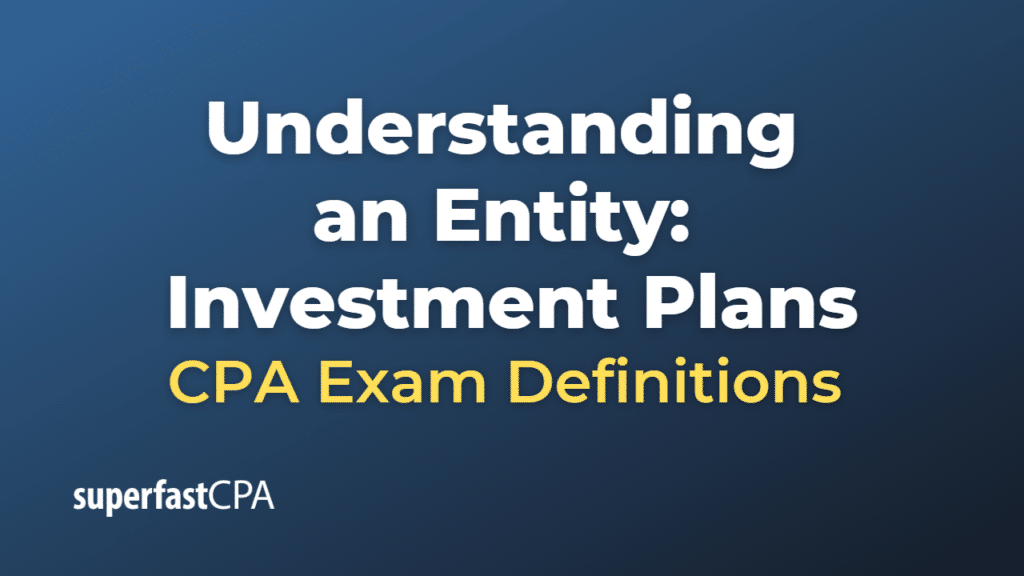Understanding an Entity: Investment Plans
An entity’s investment plans define the nature of the entity by outlining its strategic decisions regarding the allocation of resources for future growth and value creation. Investment plans may include capital expenditures, acquisitions, research and development, and other initiatives aimed at expanding the entity’s operations, entering new markets, or enhancing its competitive position. The investment plans can impact the risk of material misstatement in an entity’s financial statements in several ways:
- Complexity and valuation: Investment plans can increase the complexity of an entity’s financial reporting, as they may involve accounting for complex transactions, such as business combinations, asset impairments, or fair value measurements. The increased complexity can result in a higher risk of material misstatement due to errors, misinterpretations, or estimation uncertainties.
- Management estimates and judgments: Investment plans often require management to make significant estimates and judgments, such as forecasting future cash flows, assessing the fair value of assets or liabilities, or determining the useful lives of assets. The use of subjective estimates and judgments can increase the risk of material misstatement due to estimation errors, management bias, or the use of inappropriate assumptions.
- Financing arrangements: Investment plans may necessitate financing arrangements, such as debt issuance, equity financing, or lease agreements. These arrangements can introduce additional risks and complexities to an entity’s financial reporting, potentially increasing the risk of material misstatement due to inadequate disclosure, classification errors, or noncompliance with debt covenants.
- Regulatory and compliance risks: Investment plans can expose an entity to new regulatory and compliance requirements, particularly if the plans involve entering new markets or industries. Noncompliance with these requirements can lead to financial penalties, reputational damage, or restatements, increasing the risk of material misstatement in the financial statements.
- Operational risks: Investment plans can introduce new operational risks, such as integration challenges, supply chain disruptions, or technology implementation issues. These risks can impact the entity’s operations and financial performance, potentially increasing the risk of material misstatement in the financial statements.
When assessing the inherent risk of material misstatement during the planning and execution of an audit, auditors should consider the impact of an entity’s investment plans on its operations and financial reporting. Understanding the implications of the investment plans can help auditors design appropriate audit procedures to address the risks associated with the entity’s investments and provide reasonable assurance that the financial statements are free from material misstatement.













